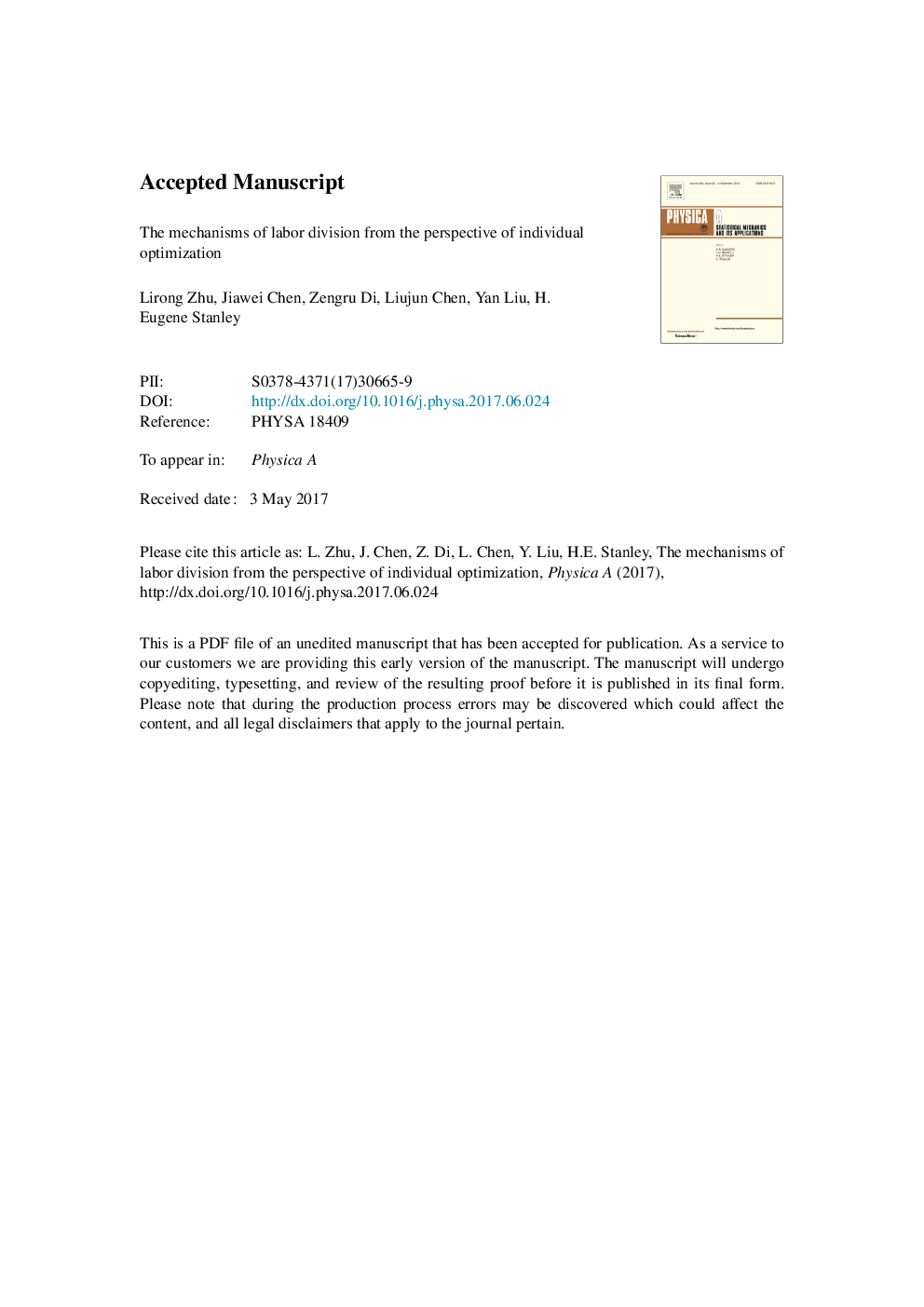| Article ID | Journal | Published Year | Pages | File Type |
|---|---|---|---|---|
| 5102525 | Physica A: Statistical Mechanics and its Applications | 2017 | 17 Pages |
Abstract
Although the tools of complexity research have been applied to the phenomenon of labor division, its underlying mechanisms are still unclear. Researchers have used evolutionary models to study labor division in terms of global optimization, but focusing on individual optimization is a more realistic, real-world approach. We do this by first developing a multi-agent model that takes into account information-sharing and learning-by-doing and by using simulations to demonstrate the emergence of labor division. We then use a master equation method and find that the computational results are consistent with the results of the simulation. Finally we find that the core underlying mechanisms that cause labor division are learning-by-doing, information cost, and random fluctuation.
Related Topics
Physical Sciences and Engineering
Mathematics
Mathematical Physics
Authors
Lirong Zhu, Jiawei Chen, Zengru Di, Liujun Chen, Yan Liu, H. Eugene Stanley,
